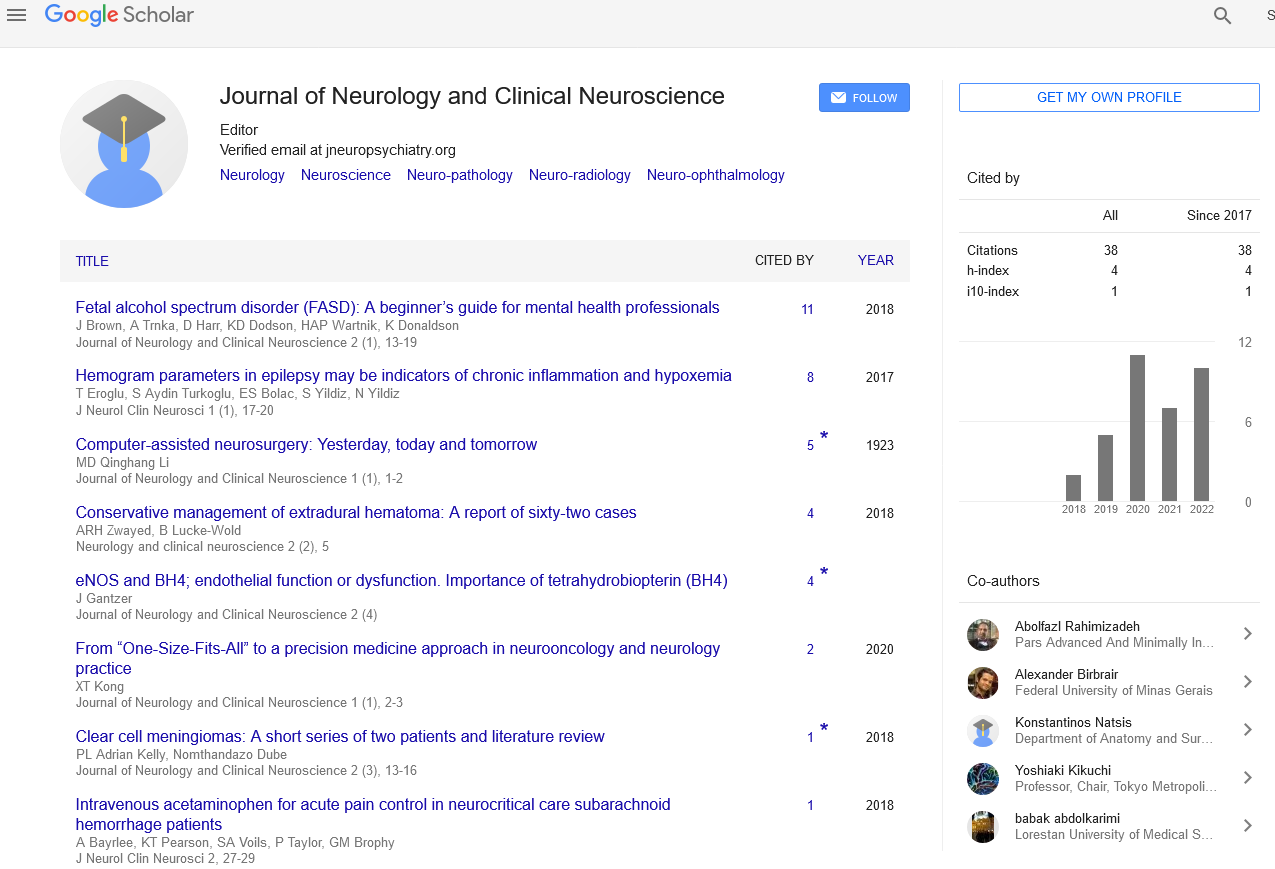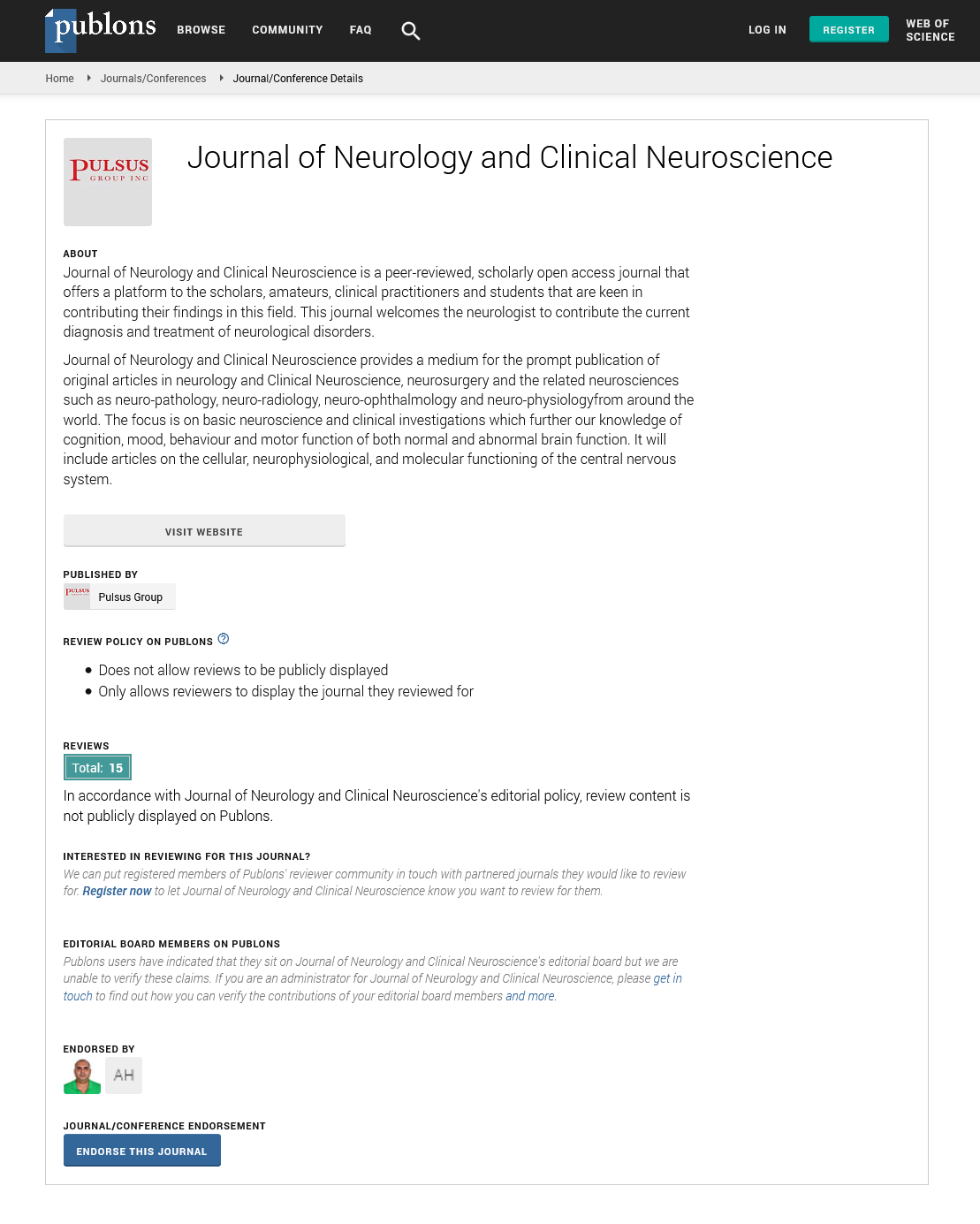cerebral palsy recent treatment options
Received: 11-Nov-2021 Accepted Date: Nov 25, 2021; Published: 02-Dec-2021
Citation: Iriani Y. Cerebral palsy: Recent treatment options. J Neurol Clin Neurosci. 2021;5(5):5.
This open-access article is distributed under the terms of the Creative Commons Attribution Non-Commercial License (CC BY-NC) (http://creativecommons.org/licenses/by-nc/4.0/), which permits reuse, distribution and reproduction of the article, provided that the original work is properly cited and the reuse is restricted to noncommercial purposes. For commercial reuse, contact reprints@pulsus.com
Description
Cerebral paralysis is a static neurologic condition induced by brain injury that occurs before complete cerebral development. The mental health is maintained during the first two years of life, cerebral paralysis can develop as a result of brain injury during the prenatal, perinatal, or postnatal periods.
Today, it is the main source of actual handicap in youth. Since there is no solution for this problem, treatment depends on the improvement of indications, which isn't constantly accomplished through ordinary treatments.
Seventy to 80 percent of patients with cerebral paralysis have spastic clinical components. Influenced appendages might exhibit expanded profound ligament reflexes, quakes, strong hypertonicity, shortcoming, and a trademark scissors stride with toe-strolling. The athetoid or dyskinetic sort of cerebral paralysis, influencing 10 to 20 percent of patients, is portrayed by strangely lethargic, squirming developments of the hands, feet, arms, or legs that are exacerbated during times of pressure and missing during rest. The most uncommon structure, ataxic cerebral paralysis, influences 5 to 10 percent of patients and predominately disables equilibrium and coordination. These patients stroll with a wide-based walk and have goal quakes that entangle execution of day by day exercises requiring fine-engine work.
Muscle reinforcing and workout regimes are well known medications for cerebral paralysis; in any case, practitioners of neurodevelopmental treatment instruct against the utilization concerning resistive exercise, since it is accepted to expand spasticity.
A few investigations have upheld the utilization of botulinum poison type and in the treatment of equine spasticity during strolling, yet a writing survey didn't discover solid proof to help or disprove its utilization for the treatment of leg spasticity in patients with cerebral paralysis. All examinations investigated utilized something like two infusion locales in every calf, focusing on the average and parallel tops of the gastrocnemius. Everything except two of the examinations evaluated used 3 to 8 mouse units mu/kg botulinum poison infusions.
Botulinum poison type A, directed by ultrasound-directed intra salivary organ infusions, has been researched to lessen salivary stream rate and right pediatric slobbering related with cerebral paralysis. Because hippotherapy improves the health of children with cerebral palsy, it should most likely be regarded as a complementary treatment to standard medications. Gross engine abilities, regulation of balance and posture, spasticity and muscular tone, reliance on activities of daily living, and mental, intellectual, and psychosocial groups are the primary variables that gain from hippotherapy.
Conclusion
Because of the restricted writing accessible on hippotherapy, there is an incredible requirement for additional audits on this theme, incorporating examines with bigger example sizes and a typical procedure in regards to length of treatment and study factors. Oral magnesium sulfate also appears to be viable in mitigating persistent bowel clogging and agony experience in youngsters with spastic CP. Thusly, saving maternal time spent in every day inside clearing endeavors. A randomized report uncovered that lactoferrin is powerful and better than Iron hydroxide Polymaltose Complex (IPC) as an oral iron supplanting treatment in kids with Cerebral Paralysis (CP) and Iron lack pallor, as it has less incidental effects.





